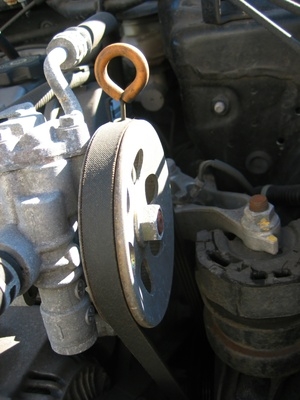
A V-belt is a power transmission drive distinguishable by its trapezoidal, hexagonal, or triangular cross section shape. Because of their characteristic shapes, V-belts are versatile belts that come in a wide array of standard types, sizes, speed, and are fairly adaptable to practically all types of drive. The speed capacity of a V-belt ranges from 1,500 to 6,000 feet per minute. Most V-belts are oil and heat resistant, and static conductive. (See References 1)
Like its name suggests, the double-sided V-belt has two Vs, one on each side. The double-sided belt is also characterized by its hexagonal cross-section shape. The shape of the double-sided V-belt allows the belt to be used in serpentine reverse bend drives where a transmission may need to drive in reverse to generate power.
Cogged V-belts are distinguishable by their trapezoidal shape, which facilitates gripping during drives to allow a transmission to achieve a higher horsepower. A cogged V-belt can either be a conventional or narrow raw edge cogged V-belt. Conventional cogged V-belts are designed for high-tension drives, while narrow cogged V-belts can be used for all drives.
A variable speed V-belt is a wider, allowing for a greater range of speeds and better resistance to twisting while transitioning from one speed to another. This type of V-belt is recommended for variable-speed sheave drives that need to control speed to achieve a certain result.
V-ribbed belts are combined variable speed V-belts that are banded together to achieve different speeds, strength and transmission capabilities. V-ribbed belts are recommended for multi-sheave drives.
The truly endless V belt is manufactured as a closed loop and is not spliced, hence the name. Truly endless V belts are designed for conditions in which pulleys are nonparallel or in which the pulley rotation changes suddenly. Despite the frequency of twisting and flexing in the truly endless V belts, they have a moderately long service life.
The outside of the poly V belt is flat and has several V-shaped grooves along the inside. One poly V belt has as much traction power as several traditional V-belts working together. In effect, this V belt configuration combines the function of the flat belt and the V belt. The design is best suited for small sheaves and can be operated at high speeds.
Open-ended V belts are useful where obstructions make access to the drive belt difficult. They are constructed the same as traditional V-belts, except that they are open-ended and do not need metal fasteners. This type of drive has a limited load capacity and tends to be expensive.